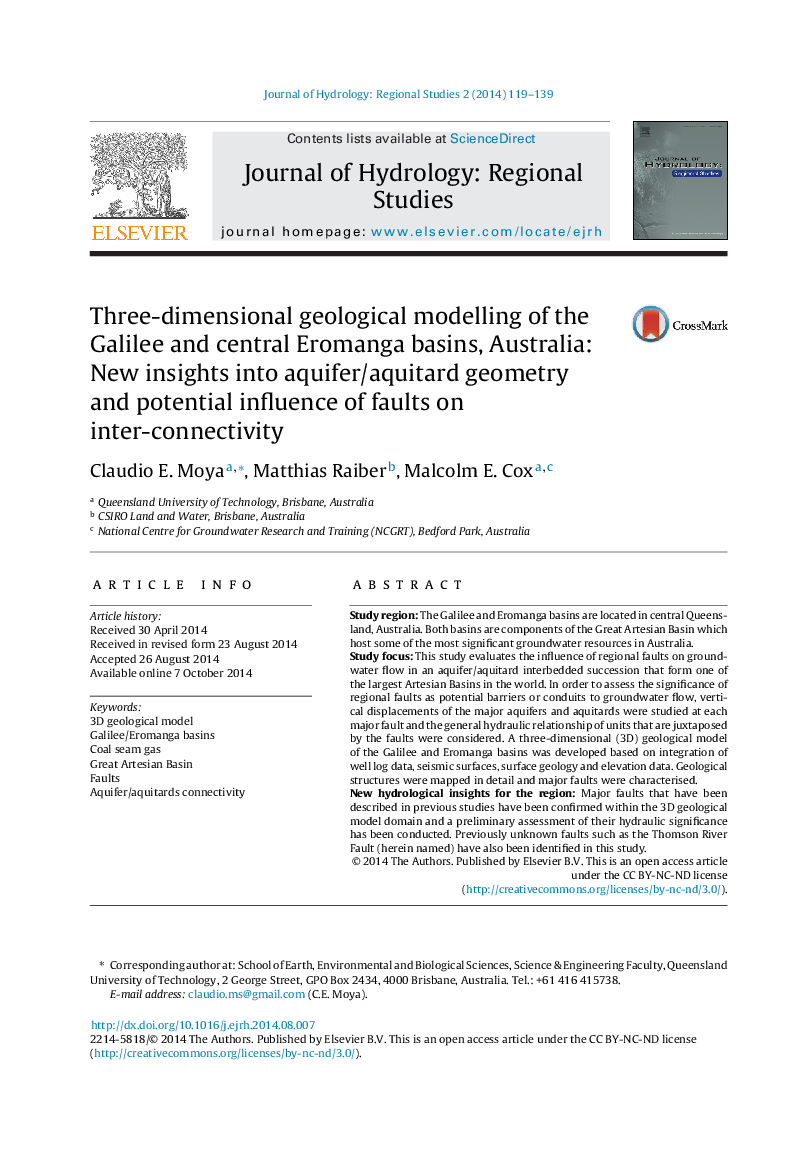| کد مقاله | کد نشریه | سال انتشار | مقاله انگلیسی | نسخه تمام متن |
|---|---|---|---|---|
| 4435287 | 1620142 | 2014 | 21 صفحه PDF | دانلود رایگان |

Study regionThe Galilee and Eromanga basins are located in central Queensland, Australia. Both basins are components of the Great Artesian Basin which host some of the most significant groundwater resources in Australia.Study focusThis study evaluates the influence of regional faults on groundwater flow in an aquifer/aquitard interbedded succession that form one of the largest Artesian Basins in the world. In order to assess the significance of regional faults as potential barriers or conduits to groundwater flow, vertical displacements of the major aquifers and aquitards were studied at each major fault and the general hydraulic relationship of units that are juxtaposed by the faults were considered. A three-dimensional (3D) geological model of the Galilee and Eromanga basins was developed based on integration of well log data, seismic surfaces, surface geology and elevation data. Geological structures were mapped in detail and major faults were characterised.New hydrological insights for the regionMajor faults that have been described in previous studies have been confirmed within the 3D geological model domain and a preliminary assessment of their hydraulic significance has been conducted. Previously unknown faults such as the Thomson River Fault (herein named) have also been identified in this study.
Journal: Journal of Hydrology: Regional Studies - Volume 2, November 2014, Pages 119–139